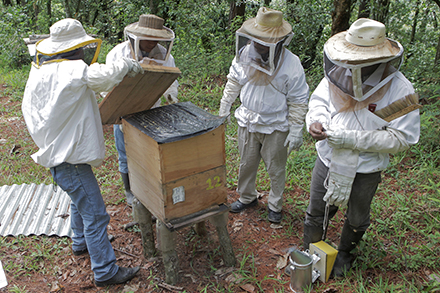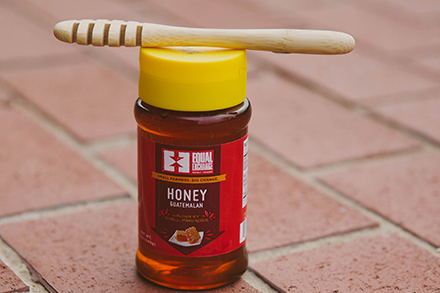
The roots of Valentine’s Day date back to the year 496, when Pope Gelasius proclaimed that February 14 would be the feast day of St. Valentine of Rome, taking precedence over Lupercalia—a pagan Roman fertility festival long-celebrated February 13-15.
Besides couples, love and happy marriages, you might be surprised to know that St. Valentine is also the patron saint of beekeepers—charged with ensuring the sweetness of honey and the protection of beekeepers. Who knew Heifer International had so much in common with good ol’ Valentine?

Heifer International beekeepers can be found around the world, in places such as Honduras, Guatemala, Nicaragua and Peru. And they wear many hats—not just the familiar veil. These farmers grow fruit and vegetables and raise livestock, but agriculture can be an unpredictable enterprise. When unfavorable weather or pests strike, a backup plan can save the day. Raising bees, which produce nonperishable honey and pollinate crops, is a sound choice.

This February 14, why not tip your (veiled) hat to the hardworking bee farmers of the world? It is the feast day of their personal saint, after all. For the sweet price of $30, Heifer honeybees make a great present. And these industrious insects pair perfectly with bee-inspired gifts. Consider a beeswax candle, milk and honey lotion, or a jar of honey. Top it off with a “BEE Mine” or “BEE My Valentine” card, and you will be the bee’s knees!
BUZZ about BEES:
*A single bee colony has the potential to double a farm’s fruit and vegetable yields through pollination.
*Honeybees flap their wings about 11,000 times a minute, creating their signature buzzing sound, and can fly approximately 15 miles per hour.
*Honey includes many essential elements necessary to sustain life, including enzymes, vitamins, minerals and water. Its unique chemical makeup allows it to be preserved indefinitely. Beekeepers can sell this nutritious, nonperishable food item for income. Honey can be harvested and sold year-round, not just during the growing season.